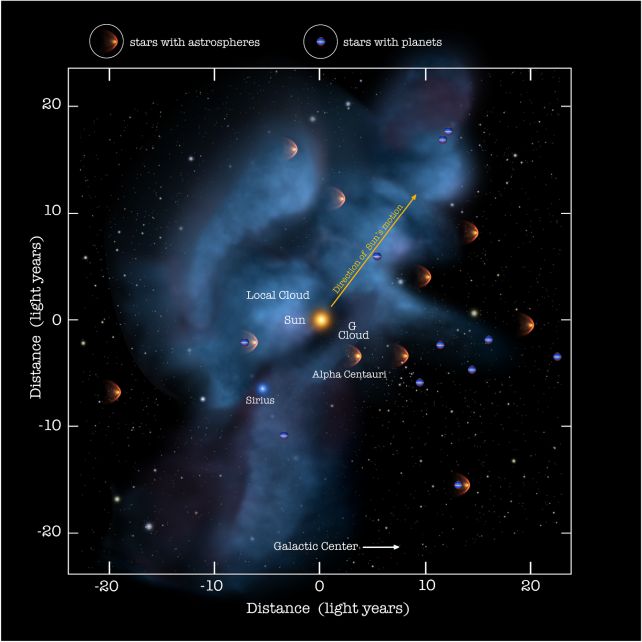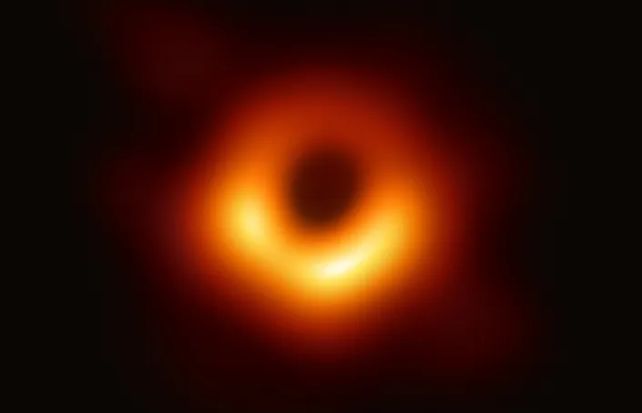Black holes are some of the most mysterious objects in the Universe – a reputation not helped by the difficulty of studying them.
Because these ultra-dense objects emit no light we can detect, we have to study them based on the effect they have on the space around them, from large distances across space-time. But there could be another way to get the skinny on these cosmic heavyweights.
"I was looking for some completely new way to study black holes," astrophysicist Cosimo Bambi of Fudan University in China told ScienceAlert, "and I realized that an interstellar mission to the closest black hole is not unrealistic – but nobody had ever proposed it."
Related: Physicists Simulated a Black Hole in The Lab, And Then It Began to Glow
Black holes generate the strongest gravitational fields in the Universe, so strong that not even light is fast enough to achieve escape velocity from its powerful hold. Although we know a fair bit about how they behave, the measure of what we don't know about them is far greater than what we do.
Additionally, the black hole gravitational regime would be one of the best in the Universe for testing general relativity, offering extreme conditions not found anywhere else that would really push the theory to its absolute limits. A probe orbiting a black hole would be able to perform tests, and take measurements of the black hole, that we can't do from Earth.
"We do not know the structure of a black hole, namely of the region inside the event horizon. General relativity makes clear predictions, but some of them are certainly incorrect," Bambi said. "Black holes are therefore ideal laboratories to find possible deviations from the predictions of general relativity."

In his proposal, Bambi lays out the physical feasibility of a black hole exploration mission, focusing on the two first hurdles that would need to be addressed: firstly, the identification of a suitable target; and secondly, the technology.
To be clear, this is long-term planning. The technology we have now is not ready for such a mission, and the distances involved would mean a travel time of decades. But each journey begins with a single step – and without that step, the journey cannot take place.
Finding a suitable black hole to visit is the first major hurdle. Currently, the closest known black hole to Earth resides at a distance of about 1,565 light-years. That's too far, really. There could, however, be black holes much closer.
If they're just hanging out in space, not doing anything, black holes are hard to spot, but astronomers are getting better at finding them based on the way their gravitational field warps the space-time around them. Finding such a black hole nearby within the next decade or so isn't outside the realm of possibility.

"I think we just need to be 'lucky' and have a black hole within 20 to 25 light-years. This is not under our control, of course. If there is a black hole within 20 to 25 light-years of the Solar System, we can develop the technology for such a mission," Bambi explained.
"If the black hole is not within 20 to 25 light-years, but still within 40 to 50 light-years, the technological requirements are more challenging. If the black hole is at more than 40 to 50 light-years, I am afraid we have to give up."
The next step would be how to get there. This would require the development of a craft that can travel at speeds up to a third of the speed of light, powered initially by Earth-based lasers, then by solar (or stellar) power as it makes its way to its destination – a journey of 70 years or so.
"Two or more probes orbiting around the black hole would be the best option," Bambi said.
"Generally speaking, we need that the probe gets as close as possible to the black hole, then it separates into a main probe (mothership) and many small probes. If these probes can communicate with each other through the exchange of electromagnetic signals, we can determine their exact trajectories around the black hole and how electromagnetic signals propagate around the black hole."

Any data sent from the probe would then travel at light-speed to get back to Earth; at a distance of 20 light-years, that would mean an additional 20 years before data comes in, for a total mission duration of around a century or so.
That's a long time, but it's worth thinking about now, even before a nearby black hole has been found, because such a mission would require a great deal of planning. And the results would absolutely be worth it, Bambi said.
"I would hope to observe deviations from the predictions of general relativity and some clues to develop a theory beyond general relativity," he told ScienceAlert.
In a statement, he adds, "It may sound really crazy, and in a sense closer to science fiction. But people said we'd never detect gravitational waves because they're too weak. We did – 100 years later. People thought we'd never observe the shadows of black holes. Now, 50 years later, we have images of two."
The proposal has been published in iScience.
